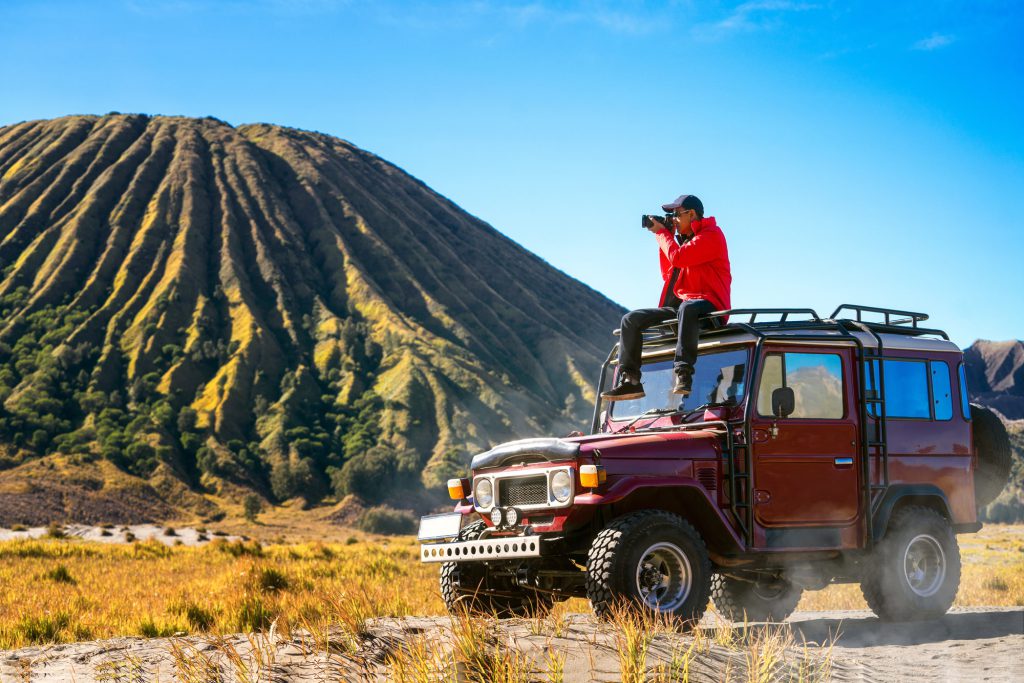East Java is home to some of Indonesia’s most incredible natural wonders, and among them stands the iconic Ijen Crater (Kawah Ijen), known not only for its striking turquoise lake but also for the extraordinary blue fire phenomenon. This rare natural spectacle draws adventurers and photographers from all over the world, making it a bucket-list destination for nature lovers. The beauty of the Ijen Crater, combined with the thrill of seeing blue flames dance in the dark, offers an unforgettable experience.
1. What Makes Ijen Crater Unique?
Located in Banyuwangi, East Java, Ijen Crater is part of the Ijen volcanic complex, which consists of a series of stratovolcanoes. What sets Ijen apart from other volcanic sites is the acidic, emerald-green crater lake and the natural blue fire, which is caused by sulfuric gases combusting as they emerge from cracks in the volcano at high temperatures. This rare phenomenon is visible at night, making an early-morning trek to the crater essential.
2. The Magic of the Blue Fire
The blue fire at Ijen is one of only two such occurrences in the world, the other being in Iceland. Unlike the red-orange flames we usually associate with fire, the blue flames occur when sulfur gases escape from fissures in the volcano and ignite upon contact with the oxygen in the air. The result is an ethereal blue glow, creating a truly otherworldly scene that can only be witnessed in the darkness before dawn.
Seeing the blue fire is best achieved by starting the trek in the middle of the night, typically around 1 or 2 a.m. After reaching the rim, trekkers descend into the crater to get a closer look at the glowing phenomenon. The sight of the blue fire dancing across the crater floor is nothing short of magical.
3. The Trek to Ijen Crater
The journey to Ijen Crater is an adventure in itself. The hike, which takes around 1.5 to 2 hours, starts at the base of the mountain and ascends through rugged terrain. While the trek can be challenging due to the steep incline and loose volcanic rock, the reward of witnessing the blue fire makes the effort well worth it. Along the way, you’ll pass by sulfur miners, who work tirelessly to extract solid sulfur from the crater, adding a unique human element to the experience.
4. The Stunning Turquoise Lake
At the heart of Ijen Crater lies the world’s largest acidic lake, with a mesmerizing turquoise color that contrasts beautifully with the rocky, sulfur-streaked landscape. The lake’s vivid hue comes from its high concentration of dissolved metals and acidity, which gives the water its striking appearance. While it’s breathtaking to look at, the lake is highly acidic, so it’s important to admire it from a safe distance.
5. Sulfur Mining: A Glimpse into Local Life
While tourists are drawn to Ijen for its natural beauty, the crater is also home to one of the most grueling sulfur mining operations in the world. Local miners, known as penambang belerang, carry heavy loads of solid sulfur from the depths of the crater, trekking back and forth in harsh conditions. Their work is physically demanding and dangerous, yet it provides an essential livelihood. Many visitors leave with a newfound respect for the miners after witnessing their daily efforts up close.
6. Best Time to Visit Ijen Crater
The best time to visit Ijen Crater for blue fire viewing is during the dry season, which typically runs from May to September. During these months, the skies are clearer, and the chances of rain disrupting your trek are minimal. The blue fire is most visible in the early morning hours, so plan your hike accordingly to catch the flames in all their glory.
7. How to Get There
Ijen Crater is accessible from the nearby cities of Banyuwangi or Bondowoso. Most visitors opt for guided tours that include transportation, as the crater is located in a remote area. The drive to the base of the hike can take a few hours, depending on your starting point, so it’s recommended to stay overnight in one of the nearby towns.
8. Safety Tips for Your Ijen Adventure
While the trek to Ijen Crater is incredibly rewarding, it’s important to be mindful of safety. The volcanic gases, particularly sulfur dioxide, can be harmful if inhaled in large quantities, so wearing a gas mask is essential. Tour guides typically provide masks, but it’s a good idea to bring your own to ensure comfort. Additionally, wear sturdy hiking shoes and bring plenty of water for the hike.
9. Conclusion
The Ijen Crater is a destination like no other. Its striking beauty, coupled with the rare blue fire, makes it one of the most fascinating natural wonders in Indonesia. Whether you’re an adventure enthusiast or a photography lover, witnessing the blue flames of Ijen and its turquoise lake will leave you with memories to last a lifetime.
Plan your trip to Ijen Crater, and prepare for an extraordinary adventure in East Java that blends natural wonder, cultural insight, and breathtaking scenery.


